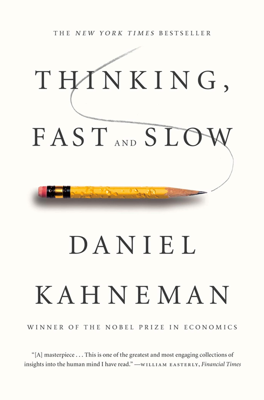A Machine for Jumping to Conclusions
Jumping to Conclusions and System 1’s Efficiency
- Efficiency of Conclusions: System 1 can efficiently jump to conclusions when these are likely to be correct and when the costs of occasional mistakes are acceptable. This saves time and effort.
- Risks in Unfamiliar Situations: In unfamiliar situations with high stakes and limited time to gather information, intuitive errors are probable. These errors can be mitigated by deliberate intervention from System 2.
Neglect of Ambiguity and Suppression of Doubt
- Automatic Context Interpretation: System 1 quickly resolves ambiguity without awareness of doing so. For example, the same visual symbol is interpreted as a letter among letters and as a number among numbers based on the surrounding context.
- Creation of Context: System 1 automatically generates plausible contexts for ambiguous information, like interpreting "bank" in a financial sense rather than as the side of a river, depending on recent thoughts or common experiences.
A Bias to Believe and Confirm
- Initial Belief System: System 1 initially attempts to believe any statement it encounters, constructing a logical interpretation if possible. Doubting or disbelieving is a function of the more deliberate System 2.
- Confirmation Bias: System 1 exhibits a confirmation bias, favoring uncritical acceptance of suggestions and exaggerating the probability of rare events based on associative memory’s influence.
Exaggerated Emotional Coherence (Halo Effect)
- Halo Effect in Judgments: Liking one aspect of something (e.g., a person's politics) influences perceptions of unrelated traits (e.g., their appearance or voice). This simplifies the complex reality into a more coherent and less accurate story.
- Influence of Initial Information: First impressions heavily influence subsequent interpretation and decision-making due to the halo effect, often outweighing later data.
WYSIATI: What You See Is All There Is
- Limited Information Processing: System 1 forms coherent stories with whatever information is available, ignoring absent data. This can lead to confident decisions based on limited evidence.
- Association-Driven Coherence: The coherence of a story, not its completeness or accuracy, determines its acceptance. System 1 prioritizes coherence, making it prone to overconfidence and susceptible to framing effects and base-rate neglect.
Implications for Decision-Making and Judgment
- Error Decorrelation in Evaluation Procedures: To avoid biases like the halo effect, it's crucial to decorrelate errors by making judgments based on independent assessments rather than influenced or sequential evaluations.
- Influence of Narratives in Organizational Decisions: In settings like business or legal judgments, decisions are often based on the coherent story constructed from available data, disregarding the incompleteness of that data due to WYSIATI.
This examination of how System 1 processes information highlights its propensity for jumping to conclusions and forming beliefs based on limited and context-influenced information, revealing vulnerabilities in human judgment and decision-making processes.
